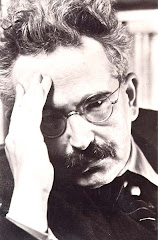In Lurianic Kabbalah, the idea of tzimtzum ties cosmogony to theodicy. In Lurianic Kabbalah, the creation of the world begins, not with the contraction of God into the world, as earlier Jewish mystical traditions had posited, but with the retraction of God from the world. The retreat of the infinite to make way for the finite explains why there is something and not nothing and why the something that is the world is filled not simply with good but also with evil. Developed against the traumatic historical backdrop of the Spanish Inquisition, the exile of the Jewish people could be explained by the aboriginal exile of God. The Jews, far from being punished by God for any sin, were simply playing out the heavenly struggle, in which God sought to reunite with himself. For Lurianic Kabbalah, the exile of the Jewish people is, despite its violent reality, also a metaphor for the cosmic exile. The house of Israel is not only cut off from itself, and God severed from his beloved people, but God is alienated from himself. It is humanity’s task to repair the world, to piece together the shattered sparks of divinity and elevate them to their splendorous source. But humanity can only begin to exhume the dry bones of divinity, to resurrect the dead deity who was once Master of the Universe when it accepts the world’s imperfections and the imperfections of its Creator as real, yet alterable.
If God is cut off from himself, this provides new insight into circumcision as a kind of immitatio Dei. Just as Jews crush a wedding glass to remind themselves of the destruction of the Temple and the Jewish exile, even, and especially in times of great joy, Jews circumcise their baby boys as a way of celebrating life while remaining cognizant of its imperfections. According to some of the Sabbateans, when the Messiah comes, circumcision will be abolished. On this view, Jews circumcise as a reminder that the Messiah has not yet come. And if the discrepancy between Judaism and Christianity is precisely over whether the Messiah has come, it is quite fitting that Christianity broke with Judaism precisely by freeing its pagan converts from the “old covenant” and the commandment of circumcision. The early Church often cited the injunction to “circumcise thine heart” (Deut. 30:6) as proof that circumcision was not a physical act, but rather a spiritual one (see also Rom. 2:29). For Christianity, the circumcision of Christ from God in the form of the Crucifixion, in which Christ called out, “Oh Lord, why hast Thou forsaken me?” is meant to cleanse Christ’s followers of sin and relieve them of the “Old Testament” laws, of the “old covenant,” and thus, of circumcision. Ironically, however, it was Christianity that posited original sin, while Judaism, posited original purity. That the circumcision is carried out on the eighth day and not the first, testifies to the Jewish notion that we are not fated to imperfection and that redemption can occur in the world and not just in the soul. In the context of Nazi Germany, in which Jews could be discovered if by nothing else than by their circumcisions, the mark of imperfection takes on additional meaning. In this way, the circumcision is the Jewish symbol of iconoclasm, of the refusal to worship graven images. It is the mark of the stiff necked people’s refusal to bow to the Hamans and Nebuchadneczars of the world.
Thursday, June 26, 2008
Subscribe to:
Post Comments (Atom)






No comments:
Post a Comment